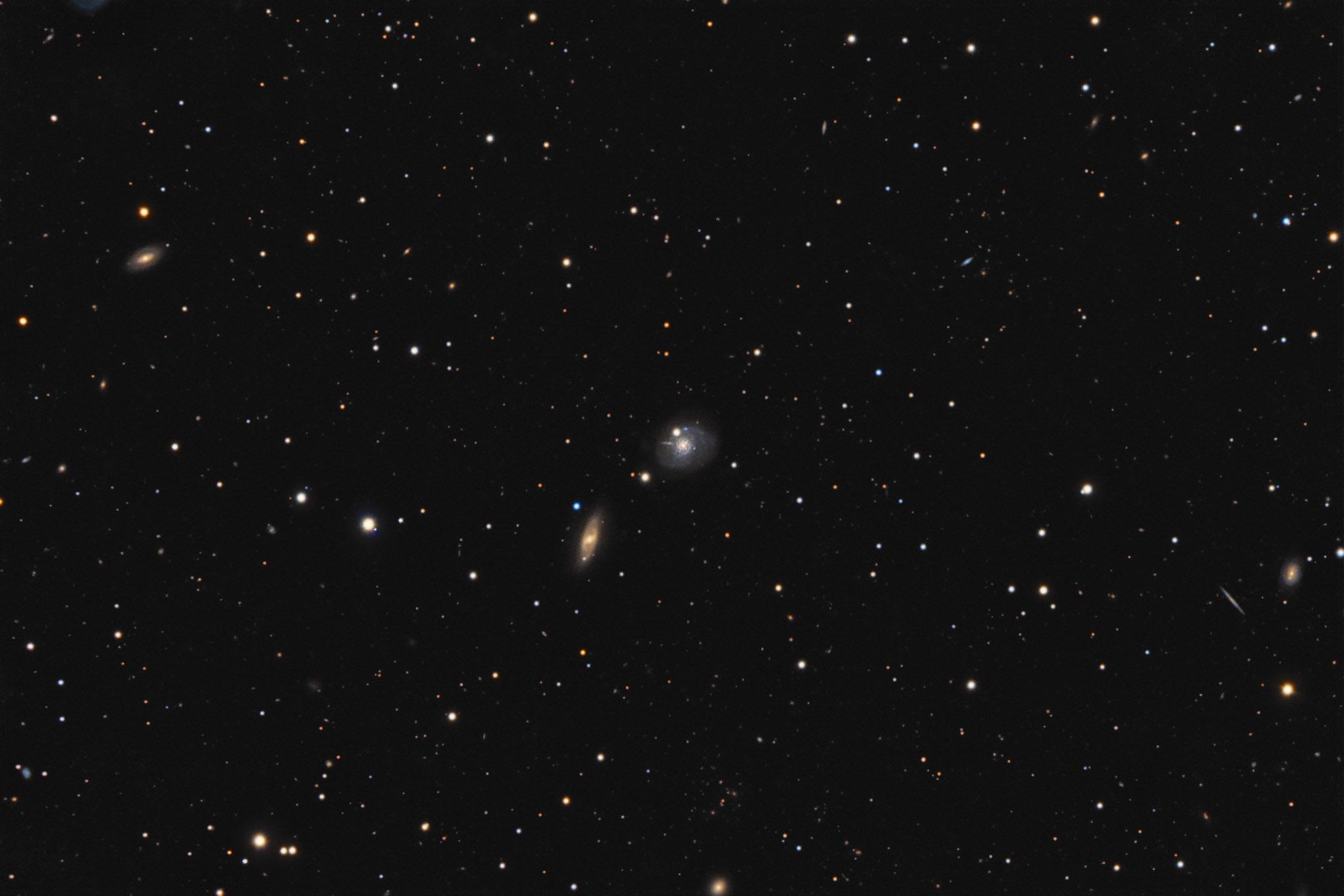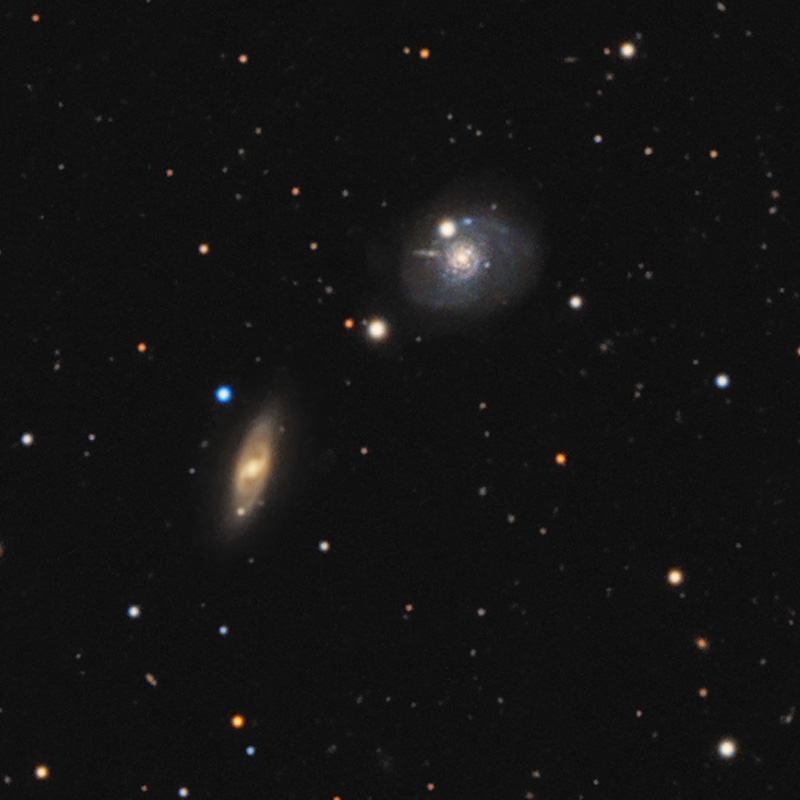| Description | Images |
Object name: UGC04671Designation(s): UGC04671, FGC0813, NGC2692, UGC04690, UGC 4671 and NGC 2692 are a pair of very different galaxies in northwestern Ursa Major just above its front paws. Redshift puts them about 190 million light-years distant. UGC 4671 is classed simply as S? while its much redder companion is listed as SBab:. NGC 2692 being a rather normal red barred spiral with little to no recent star formation is a rather dull partner but a nice color contrast to the far more interesting UGC 4671. This is a tight blue spiral in the center surrounded by a large, disk with only hints of spiral structure. While NED lists several galaxies seen right through this disk it omits the most interesting one. The others are very small and star-like but the one NED omits appears to be a distant, near edge on spiral. It has a normal left (east) side and a reddish core but is missing most of the western (right) side. I doubt that it is really missing. Just that it is behind UGC 4671 and the western half of the galaxy is mostly obscured by dust and gas in the denser core region of UGC 4671. Related Designation(s):2MASS J08551312+5202241, 2MASS J08564272+5206192, 2MASS J08565801+5203574, 2MASS J08581081+5210582, 2MASX J08564273+5206195, 2MASX J08565802+5203575, 2MASX J08581077+5210581, AKARI J0856432+520617, ASK 050921.0, ASK 050923.0, ASK 088900.0, CGCG 0853.1+5218, CGCG 0853.3+5216, CGCG 0854.5+5223, CGCG 264-033, CGCG 264-036, CGCG 264-038, EON J133.805+52.040, FGC 0813, FGC0813, GALEXASC J085512.89+520224.0 , GALEXASC J085642.70+520619.5 , GALEXASC J085658.01+520359.2 , GALEXASC J085811.02+521058.5 , GALEXMSC J085512.89+520224.3 , GALEXMSC J085642.80+520622.4 , GALEXMSC J085658.04+520357.0 , GALEXMSC J085810.99+521059.4 , IRAS 08531+5217, IRAS F08531+5217, KPG 179A, KPG 179B, KUG 0853+522, LDCE 0580 NED014, MCG +09-15-049, MCG +09-15-053, MCG +09-15-057, MCG +09-15-061, Mr20:[BFW2006] 10975 NED01, NFGS 036, NGC 2692, NGC2692, NSA 010422, NSA 010423, NSA 016156, NSA 135576, NVSS J085642+520617, PGC 025039, PGC 025130, PGC 025142, PGC 025194, RFGC 1456, SDSS J085513.16+520224.7, SDSS J085513.17+520224.4, SDSS J085513.19+520224.4, SDSS J085513.19+520224.5, SDSS J085642.72+520619.3, SDSS J085642.73+520619.2, SDSS J085657.99+520357.4, SDSS J085658.00+520357.4, SDSS J085658.00+520357.6, SDSS J085658.01+520357.4, SDSS J085810.79+521058.1, SDSS J085810.79+521058.2, SDSS J085810.80+521058.1, SDSS J085810.81+521058.1, SIT 0025-1, UGC 04671, UGC 04675, UGC 04690, UGC04671, UGC04690, UZC J085642.7+520620, UZC J085658.0+520358, UZC J085810.8+521058, [BFW2006] J134.54498+52.18284 , [M98j] 053 NED01, [M98j] 053 NED02, [PVK2003] J133.80498+52.04015 , [TCW2007] 054, [TTL2012] 337275, [TTL2012] 337277, | Permanent link: https://images.mantrapskies.com/catalog/OTHER/UGC04671-FGC0813-NGC2692-UGC04690/UGC4671L5X10RGB2X10.JPG |


